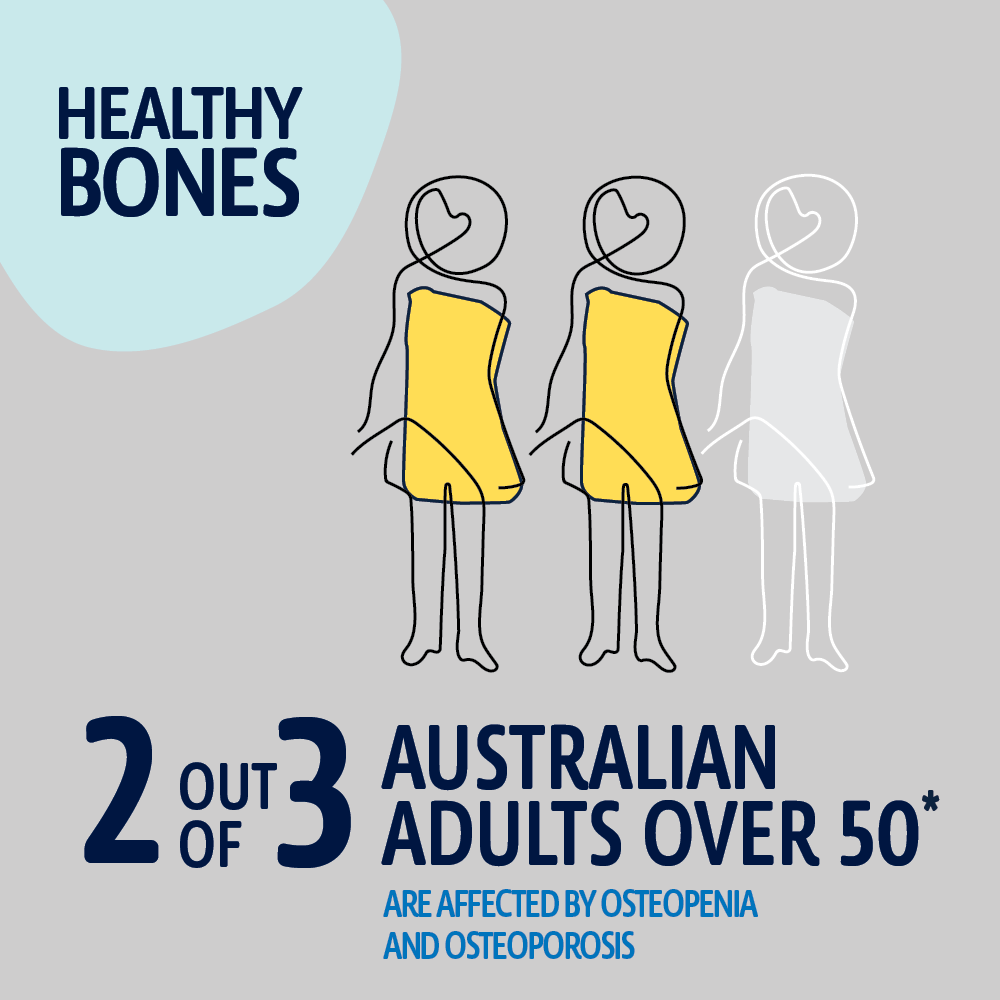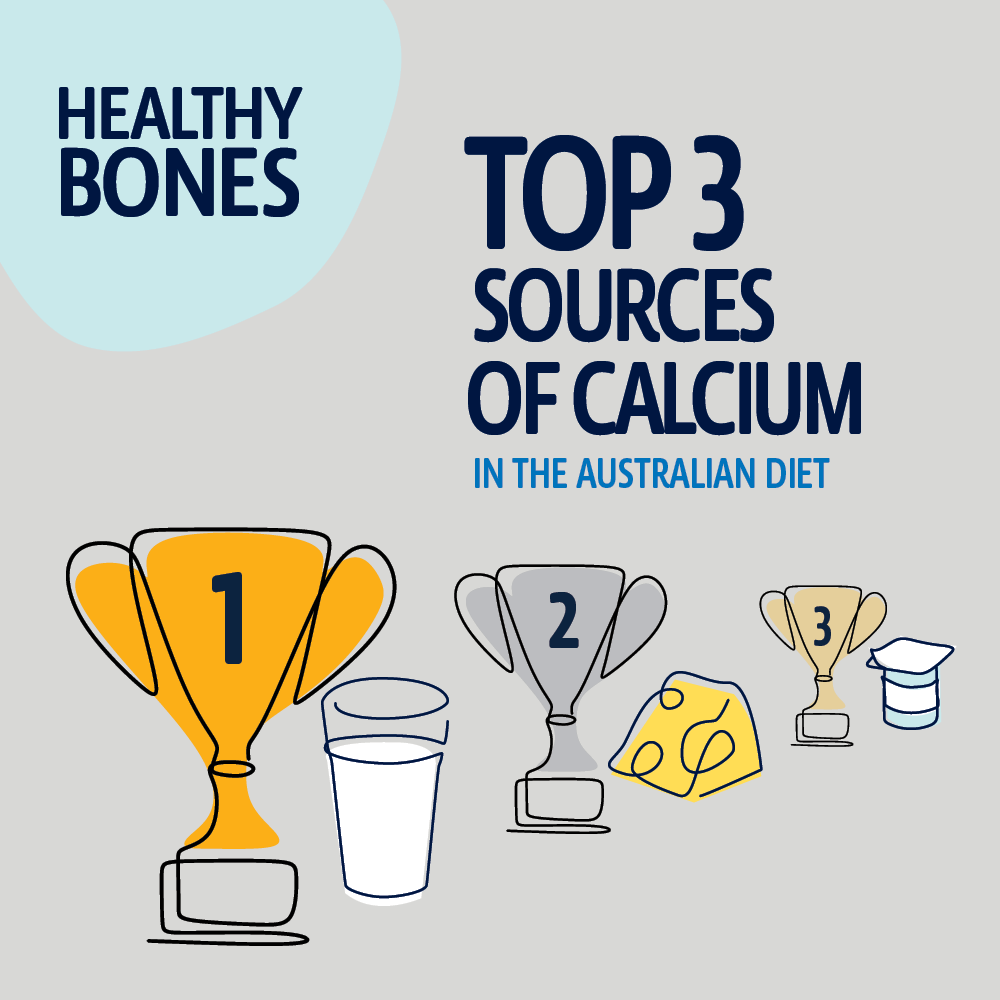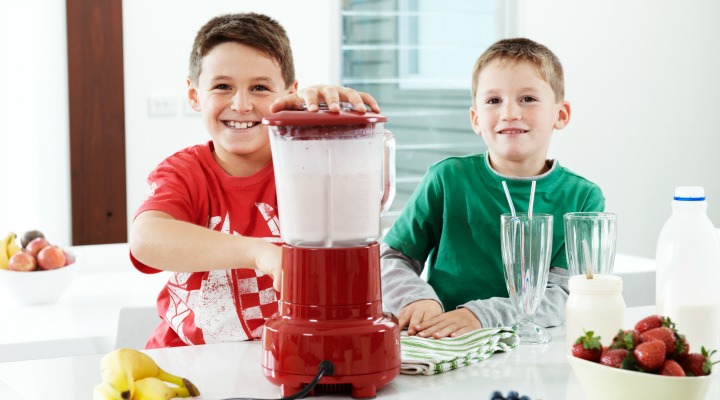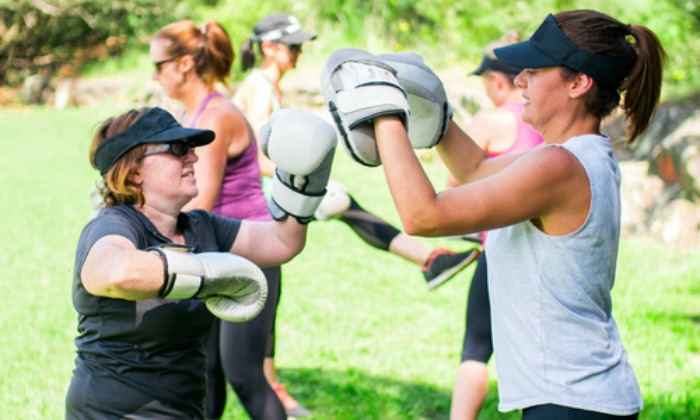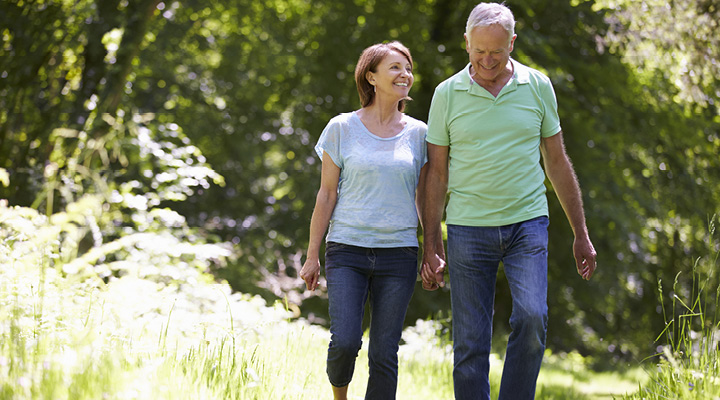
What Is Osteoporosis?
About osteoporosis
Osteoporosis occurs when bones lose calcium and other minerals, making them fragile and more likely to fracture. In Australia, osteoporosis affects 1.2 million people. This number is expected to increase as our population grows older. For more information download our Osteoporosis fact sheet.
Osteoporosis affects more than 1 in 5 women over the age of 65 years, compared with around 1 in 20 men. Women are at greater risk of developing osteoporosis because of the rapid drop in the hormone oestrogen during menopause. In men, testosterone levels decline more gradually. As a result, bone mass in men usually remains adequate until later in life. By age 65, both men and women lose bone at the same rate.
Reducing your risk of osteoporosis
Genes and lifestyle impact how strong bones are. While you can't change your genetics, you can adopt a 'bone friendly' lifestyle which includes:
- Consuming plenty of calcium-rich foods, such as milk, cheese and yoghurt, every day;
- Participating in regular exercise and physical activity; and
- Enjoying regular and safe sun exposure for adequate vitamin D production.
Habits like smoking and excessive alcohol intake are bad for bones. There are also a number of other risk factors for low bone density, including family history of osteoporosis and certain medical conditions and medications.
The best sources of calcium
Calcium is essential for building strong bones as well as supporting muscle and nerve function. If we do not eat enough calcium, the calcium within our bones is used for other body functions. Over a long period of time bone strength can decline and may increase our risk of osteoporosis.
Milk, cheese and yoghurt are a rich source of calcium in the Australian diet, supplying around 60 per cent of the calcium we eat. These foods belong to the dairy food group - one of the five food groups recommended in the Australian Dietary Guidelines. Find out more about the recommendations for your age and gender.
Calcium can also be found in other foods, however meeting calcium needs without dairy foods can be difficult. You would need to consume five cups of cooked broccoli; 32 brussels sprouts; 165g almonds; or five cups of red beans to get the same amount of calcium as one 250ml glass of milk.
